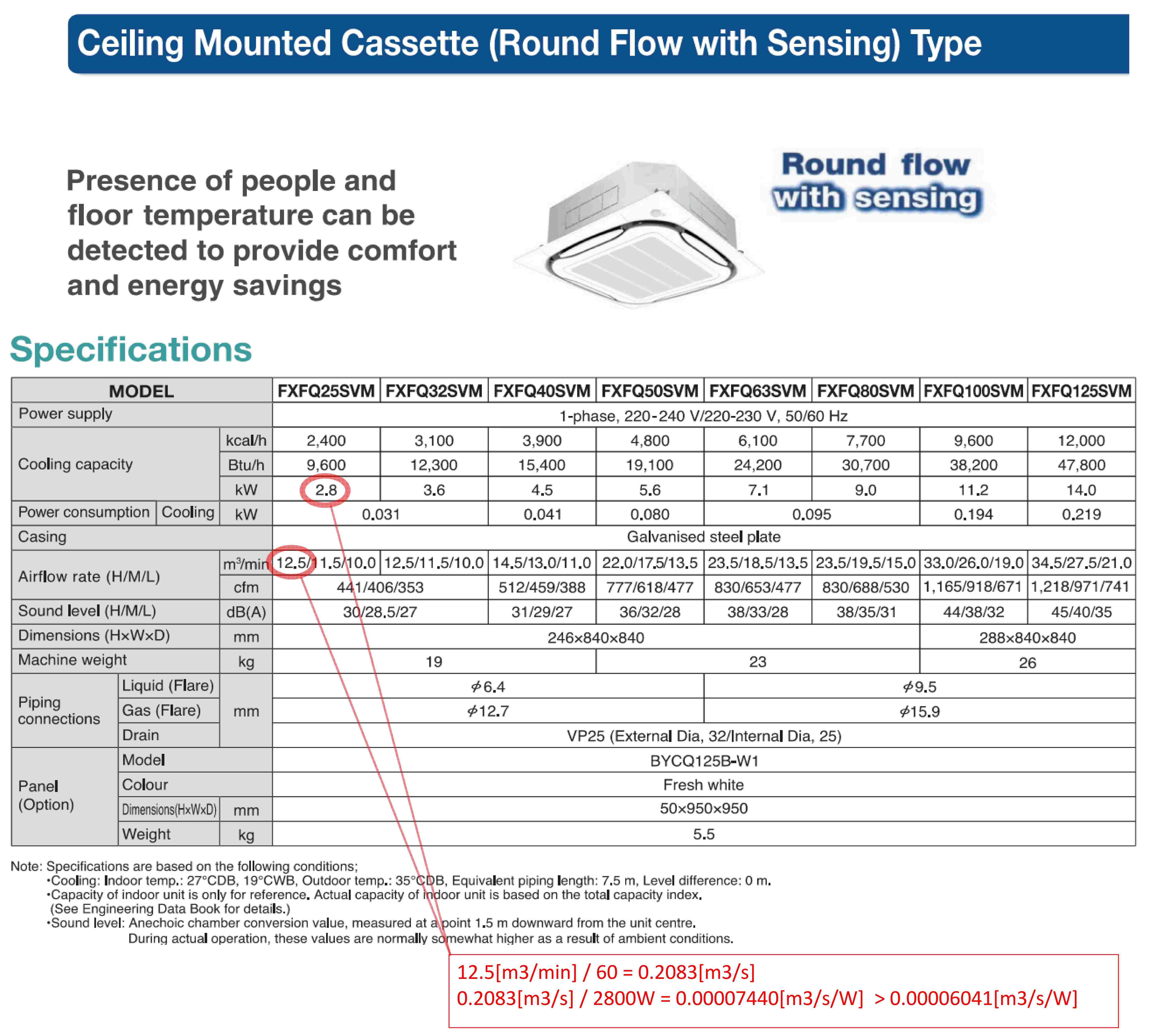Why is DX coil's rated airflow per rated cooling/heating capacity limited?
For DX cooling/heating coils, the rated air volume flow rate per watt of rated total cooling/heating capacity is limited from 0.00004027m3/s/W to 0.00006041 m3/s/W (300 to 450 cfm/ton) (I/O Reference, Engineering Reference).
Most VRF indoor units can switch airflow like H/L or H/M/L, but normally, only one power consumption is on catalogues or technical data sheets, so I regard the power consumption the maximum fan power with the highest airflow rate i.e., I input the highest airflow rate to Cooling Supply Air Flow Rate and Heating Supply Air Flow Rate in ZoneHVAC:TerminalUnit:VariableRefrigerantFlow. The drain pump power may be included in the power consumption, but I ignore it unless I can identify it. And I input the lowest airflow rate to No Cooling Supply Air Flow Rate and No Heating Supply Air Flow Rate in ZoneHVAC:TerminalUnit:VariableRefrigerantFlow.
The problem is that the highest airflow rate in product catalogues often exceeds the upper limit of 0.00006041 m3/s/W. The airflow constraints are not in line with the actual products. Below is an extract from DAIKIN's catalogue as an exapmle.

I have a few questions:
- Why does EnergyPlus have lower and upper limits for DX coil's rated airflow rate per cooling/heaitng capacity?
- Will the limits be relaxed or eliminated in the future?
- For now, should we use the airflow that meets the limits rather than the maximum airflow from the multiple airflow listed in product catalogues?






Some discussion as to 'why' here: https://github.com/NREL/EnergyPlus/is...
@Eric Ringold Thank you for sharing the thread. @rraustad says "the limits are there to protect the user from operating a DX system out of range on flow rate and is based on review of manufacturers data." If that's the case, the data is old and should be updated. I know that too low airflow rate per capacity may cause coil freezing, so it is reasonable to have a lower limit for the rated airflow per capacity, but we don't need to have the upper limit of 0.00006041m3/s/W (450cfm/ton).
and.... I don't think E+ crashes when you exceed the ranges. Instead, it gives MANY warnings. If you have reviewed the situation and are confident it's acceptable, then I think you can ignore the warnings